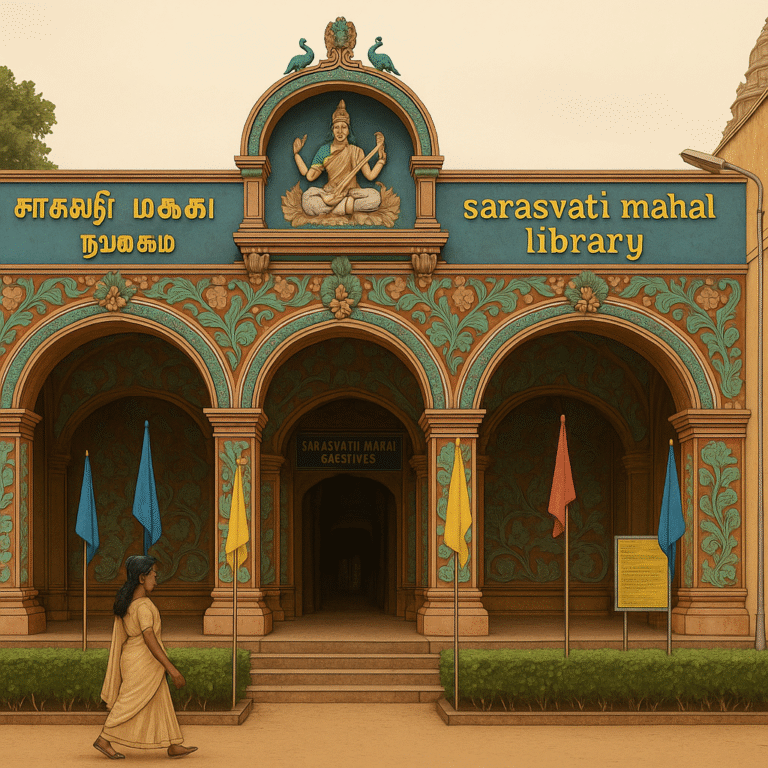The city of Thanjavur in Tamil Nadu is home to the historic Maratha Palace. From 1535 to 1674, it served as the seat of power for the Nayak dynasty, rulers who not only defended South India from foreign invasions but also ushered in a golden age of literature and culture. During their reign, they established a special library to preserve ancient manuscripts — a treasure now known as the Sarasvati Mahal Library, regarded as the oldest surviving library in Tamil Nadu and one of the oldest in India.
Locally called Maharaja Serfoji’s Library, the institution bears the name of a Maratha king, even though it was originally founded by the Nayaks. The reason lies in history: in 1675, the Marathas captured Thanjavur from the Nayaks. While the Nayak rule ended, the tradition of preserving literature continued — and it was Serfoji II, a Maratha ruler, who played the most significant role in expanding and enriching the library’s collection.
A visionary leader, philosopher, humanist, and Sanskrit scholar, Serfoji II immersed himself in the library’s manuscripts, reading them all in a short span. Eager to expand the collection, he invited Sanskrit scholars from northern and northeastern India, acquiring rare works and commissioning copies of ancient texts. The library’s holdings grew to include not only Sanskrit, but also Tamil, Telugu, Marathi, and English works. Serfoji also created one of India’s earliest cultural and literary maps. Remarkably, the library housed the world’s oldest printed atlas and the earliest Tamil Bible, printed in the late 17th century. The Bible was stolen in 2005 but was later recovered from the London Museum.
While other Indian libraries built before the Nayak era have vanished with time, this remarkable institution has survived for over 500 years. Today, it preserves around 49,000 manuscripts, including 39,000 in Sanskrit, 3,500 in Tamil, and 3,000 in Marathi — among them priceless works like the oldest known manuscripts of Saint Ramdas and Dattatreya, the 1807 Madras Almanac, currency issued by Serfoji II, his globes, maps, correspondence, and original plans of Thanjavur city.
The library temporarily closed during the late 18th century under British rule but reopened to the public in 1918. After India’s independence, the Government of India assumed responsibility for maintaining not only the library but the entire Maratha Palace complex.
Today, the Sarasvati Mahal Library stands as a living archive — not just a jewel of Tamil Nadu, but a proud cultural treasure for the entire nation.

